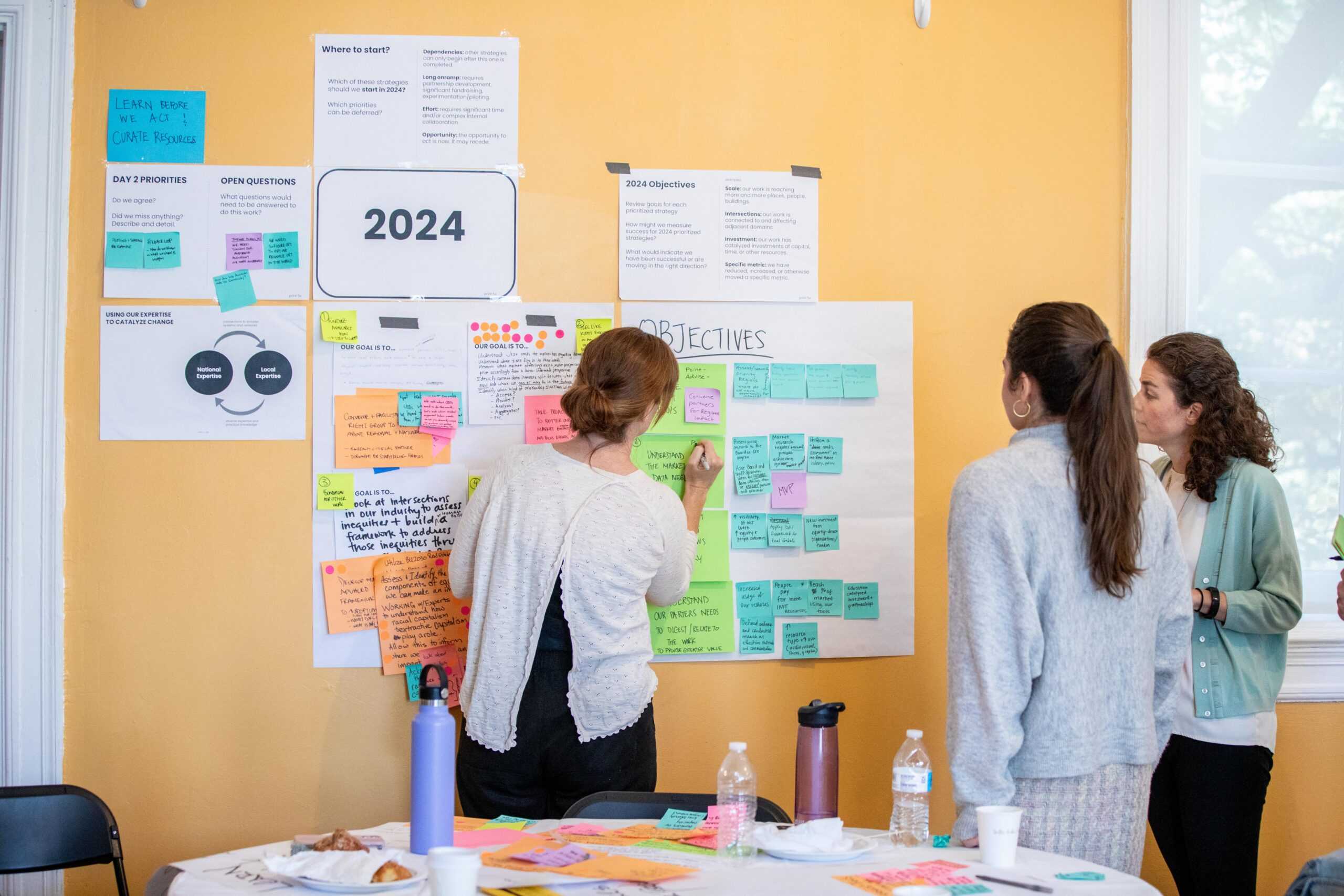BuildUp 2030
The buildings we live, work, and learn inside are also powerful levers for economic growth, climate action, health, and social justice. For more than 20 years, the Institute for Market Transformation (IMT) has transformed how our buildings improve the daily lives of all Americans.
In 2020, we launched BuildUp 2030, a decade-long vision to improve U.S. buildings and reduce pollution, improve health, and support communities to thrive. Read more about our goals and strategies below.
Read 2024-2027 Strategic Plan Strategic Priorities Our Progress

Goal 1: Design and adopt equitable building performance requirements nationwide by 2030
Strategies
- Co-design and support local policy change
- Share power and knowledge
- Co-design and support state policy change
- Engage utilities in a just transition
- Catalyze federal action
- Push for strong new construction standards
and policies - Change industry norms

Goal 2: Make equitable decarbonization more accessible and actionable
Strategies
- Deploy a portfolio of policy and implementation
support solutions - Provide tiered levels of implementation support
- Support inclusive workforce development
- Produce high value real-estate offerings that
advance our mission
- Change industry norms

Goal 3: Use our shared equity & continuous improvement principles to make IMT a model for organizational excellence.
Strategies
- Make equity part of everyone’s job
- Develop strategic, intentional partnerships
- Staffing and Capacity Framework
- Enhance cross-team collaboration
- Promote continuous learning
- Create a project management culture
- Communicate effectively with our key audiences

Act at the intersections

Scale deep, scale up, scale out

Build relationships that lead to power sharing

Design for the margins; benefit the whole

Make it possible to act

Cultivate a culture grounded in social justice values and committed to learning
Our Progress
Together with our collaborators, we have achieved the following progress to date:
- Developed and began deploying a framework for deeper community engagement in local policymaking and building program design processes, and supported community-led policymaking in four communities as part of Community Climate Shift.
- Supported building improvements across the United States.
- More than 300,000 buildings representing 30 billion square feet use Portfolio Manager to benchmark their building energy use today. (Source: EPA)
- Buildings representing 18 billion square feet are required to benchmark through policy, and over 8 billion square feet are required to take action if building performance falls below a threshold level of energy or carbon performance.
- More people are actively managing and improving multifamily homes, schools, and workplaces to the benefit of their inhabitants.
- In the states and cities requiring action, this leads to more economic and career opportunities in the buildings space.
- Helped the U.S. federal government integrate performance requirements across their portfolio, and set green leasing and net zero targets.
- Advised federal agencies on how to support the design and adoption of policies and practices that impact buildings.
- Provided training, coaching, and education to building owners, brokers, and tenants that resulted in record numbers of companies being recognized as Green Lease Leaders in 2023. To date, participants in the program represent 6.4 billion square feet of commercial, industrial, and multifamily space, moving closer to a tipping point of companies using this business practice to align around high performing buildings.